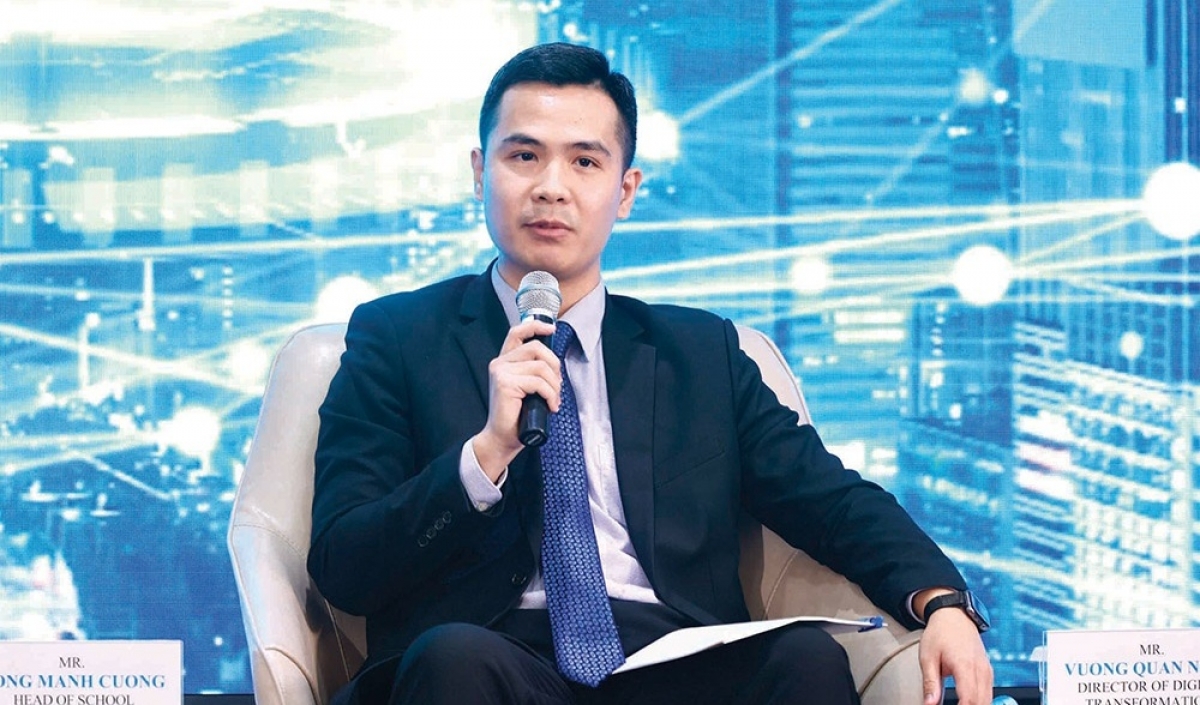INTERNATIONAL INVESTMENT
AND PORTAL
The purchase of a business is a complicated transaction whose eventual value is determined by a wide variety of circumstances. Le Khanh Lam, partner at RSM Vietnam, discusses how starting with a whole lifecycle approach to merger and acquisition management is the most efficient way to maximise value.
 Le Khanh Lam, partner at RSM Vietnam
Le Khanh Lam, partner at RSM Vietnam
The purpose of merger and acquisition (M&A) transaction management is to comprehend the value objectives defined in the deal thesis and identify how to capture that value by design in the planning from day one of operations. Although the process is inherently disruptive, utilising a well-developed approach allows realising value, decreasing integration time, and reducing risks.
To finish the plan on time, if not ahead of schedule, a transition team must be prepared with a structured governance model that gives direction for communication, change management, task planning, budgeting, technology integration and optimisation, as well as other essential pieces necessary for effective integration.
Choosing the proper transaction management partner is crucial unless a company has extensive expertise with such a transition. One will need a competent and trustworthy consultant with a breadth of knowledge to navigate unanticipated barriers throughout the transition and who can define value beyond the numbers.
There are four key characteristics to look for in a successful M&A transaction advisor.
Wide-ranging knowledge and capabilitiesMost M&A transactions aim to realise revenue synergies and cost savings associated with a larger scale. The key to success is a thorough grasp of the organisation’s intricacies in relation to the industry, as well as parts where present operating models may be adjusted to take advantage of market dynamics, utilise the thinking power of human capital, and generate better value from technology investments, all while lowering customer and order acquisition costs.
Savings from operationally driven synergies are valuable as they enable purchasers to determine the most appropriate prices for target firms. In addition, it supports establishing the duties, objectives, and targets of the value opportunities, from revenue to cost of goods sold to operational costs, as well as aligning services and solutions to capital allocations.
Furthermore, it is critical to also include tax credits and incentives, as well as opportunity zones, as these are two important fields that are sometimes disregarded in value calculations.
To integrate everything back to the investment thesis, an M&A transaction consultant should offer a flexible management consulting strategy that includes broad-ranging business and change-management competencies.
For example, they should pay special attention to IT systems, applications, advanced technology, and infrastructure; head count and workloads in connection with other factors such as quality, safety, and customer satisfaction, as well as possible chances for automation; and third-party expenditure, which may present considerable opportunities for value creation when two organisations merge.

The value of an M&A transaction is determined not just by synergies but also by speed, meaning the longer a transaction takes to complete, the more expensive it may become, albeit the progression of the transaction is also determined by the transaction type and deal conditions.
To ensure a smooth and timely transition, the newly combined firm may initially rely on transition service agreements (TSA), which establish certain services that the seller agrees to offer to the buyer at a predetermined price. These services may be significantly more expensive than if the combined entity either developed these functions itself or outsourced them from a third party.
TSAs are a crucial short-term solution, but they can be prohibitively expensive. The greatest consultants will assist in determining the proper strategic approach and priority for which TSAs to exit in which sequence, as well as the right timing. The transaction’s ultimate purpose is to leave the TSA, place all areas of the organisation under the management team, and run the business independently of the seller.
A value-driven M&A transaction consultant provides the depth and breadth of knowledge and experience required to optimise portfolio operations across all functional departments. This procedure aids in the proper management of the transaction from acquisition to exit plan.
Comprehensive methodologyPractice makes perfect, especially in such a crucial field as mergers and acquisitions. One’s M&A transaction consultant should have not just solid transaction management expertise, whether in private equity or public markets, but also a thoroughly developed methodology for delivering demonstrable business value through a complete strategy. This is especially critical in today’s complicated and unpredictably volatile M&A landscape.
Data-driven insights and outcome-focused solutions that help minimise risks and optimise returns on invested capital throughout the transaction life cycle will be critical to the success of a transaction. Instead of just using solitary spreadsheets and databases to assess enterprise system data, an M&A transaction consultant should use intelligent automation to filter through significant data sets.
This enables them to detect relevant data more quickly and precisely and to draw actionable insights that can assist assure the success of a transaction. They should present a comprehensive, people-centred change management strategy as well as dashboards that provide end-to-end insight into the transition process that allow to swiftly identify the transaction’s progress.
Resources for enabling and activating value generationA broad, diversified team that can span numerous disciplines, including not only diligence, but also risk, tax, technology, finance, and accounting, among others, may be required to achieve game-changing goals that yield the best value.
One’s M&A transaction consultant should be equipped to engage the relevant resources and ask the right questions across all critical departments, such as finance and accounting, human resources, tax and treasury, operations and supply chain, and manufacturing, to deliver whatever expertise and resources are required to complete the deal rapidly and efficiently.
One should also hunt for an advisor who has experience with integration planning and the resources to help accomplish cost-out and efficiency targets. The IT function, an often-overlooked part of merging two businesses, is likely the most time-and cost-intensive integration. Without a thorough grasp of IT capabilities, a 100-day improvement plan may take more than a year to complete, or it may fail entirely due to the magnitude of the IT issues that must be addressed.
Furthermore, if the proper processes are not in place, management will be unable to provide valuable reporting to make informed business decisions to increase profits, making an efficient and successful IT reform strategy a crucial aspect of success.
A competent M&A transaction consultant can provide insight into what is doable with existing technology, calculate the pro forma run rate expenses, estimate the one-time technology expenditures associated with the integration, and recommend which solutions and platforms help make the most sense given the investment thesis.
To optimise synergies and squeeze the most value from a deal, competent M&A transaction management represents a comprehensive approach to M&A activity, integrating people, processes, and technology.
RSM’s transaction advisory service offers an industry-unique depth and breadth of expertise. Through effectively achieving our clients’ goals, we accompany them through the whole lifespan of a transaction, from early-stage assessment to post-acquisition process optimisation.



















